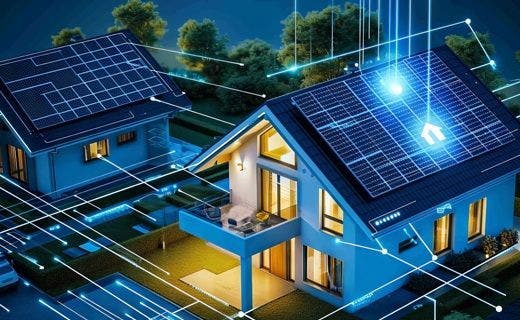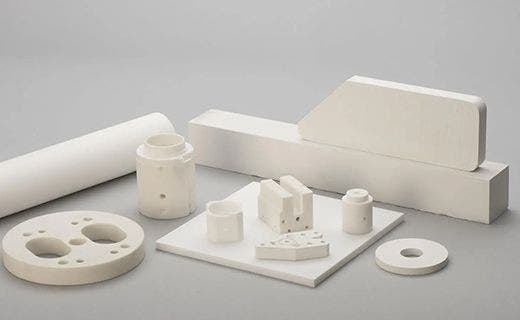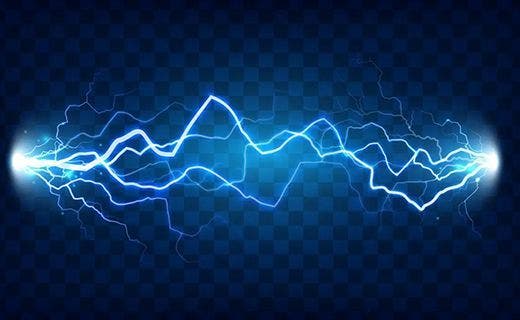Energy Research: Photovoltaics and Electricity
Photovoltaic (PV) cells, also referred to as solar cells, are devices that convert energy from the sun into electricity without the use of any mechanical parts. Sunlight is made up of small energy particles known as photons, which can be absorbed into semiconductor material in a solar cell. Inside the solar cell, the energy from the photos is converted into electrical energy.
From Photons to Power: Solar Cell Electricity Flow
When enough photons are absorbed by the solar cell, they excite the electrons in the atoms of the semiconducting material, making them move around more inside the material. The electrons then migrate toward the surface of the solar cell, which is specially designed to encourage this movement. As negatively charged electrons accumulate at the surface of the panel, there is a charge imbalance between its front and rear surfaces, creating a voltage potential similar to that found in a battery. Conductive material then captures the electrons and allows them to flow through a circuit back to where they came from. This flow of electrons creates an electric current, which can be captured in a battery connected to the circuit.
The Building Blocks of Solar Power Systems
The photovoltaic cell is the smallest component of any solar power system. Cells can be from half an inch to approximately 4 inches across. Each cell can produce 1 to 2 watts, only enough to power something small like a calculator. That's why many of them are connected together to form a solar panel. The energy-generating ability of a solar panel varies depending on how many cells it contains. In turn, panels can be connected with an aluminum frame to form an array, which can have any number of panels in it. To maximize efficiency, PV panels should be placed to directly face the sun, which in the Northern Hemisphere generally means that they should face southward.
PV cells create direct current, a form of electricity that isn't commonly used in homes. To make this current usable, PV arrays are connected to converters that turn the direct current into alternating current, the form of electricity delivered by utility grids and used by home appliances.
Measuring the Effectiveness of Solar Power Technologies
The efficiency of solar cells in turning sunlight into electricity depends on the type of material and technology used. In the mid-1980s, most solar panels converted less than 10% of the sunlight that hit them into electricity. By 2015, this efficiency had improved to about 15%. Today, the best commercial panels can reach 25% efficiency or more. Experimental solar cells and those developed for specialized uses, like the PV cells in satellites, can convert nearly 50% of the sunlight that reaches them into electricity.
Practical Uses for Solar Energy Technology
Solar energy technology has a wide range of practical uses, and the use of solar power is expanding more and more every day. We've become used to tiny solar cells being used to power everyday items like calculators and wristwatches, but on a larger scale, solar panels can also provide electricity for homes, businesses, or even entire towns. Some solar energy systems are big enough to supply electricity to thousands of people, making this technology vastly important in places where the traditional power grid doesn't reach.
The History of Solar Technology
Researchers working at Bell Laboratories developed the first silicon solar cell in 1954. This design achieved an efficiency of around 6%, far surpassing any previous type of PV cell and making the idea of using solar power for practical uses much more feasible than ever before. The new technology was put to the test right away: In 1958, the Vanguard 1 scientific research satellite became the first to include solar cells. Further research and improvements ensued, making solar panels more affordable and efficient, and amid the energy crisis and growing environmentalism of the 1970s, the first solar panels were installed to power communities in areas where connecting to the traditional power grid was too difficult and expensive.
Today, though, most of the thousands of solar installations in use all over the United States are connected to the power grid. For homeowners, this means that they can sell excess power to the local utility company and buy more when their panels don't generate enough, while for utilities, having solar arrays connected to the grid gives them increased generation capacity. Government policies and incentives have helped to drive the growing demand for solar cells, with global solar power generation reaching nearly 1,300 terrawatt-hours as of 2022.
Additional Resources
- Solar Photovoltaic Technology Basics
- History of Photovoltaic Energy
- Do Solar Panels and Home Batteries Save Energy?
- Employment Benefits of Photovoltaics' Growth
- Potential Risks When Installing Photovoltaic Solar Panels
- Solar Energy: Benefits and Safety Risks
- Solar for Health: Five Ways Solar Power Can Make Health Care More Accessible
- Are Solar Panels Harmful to Health?
- Photovoltaic Energy Fact Sheet
- How a Solar Cell Works










